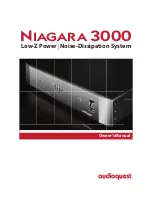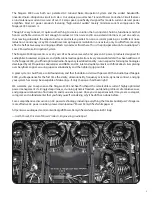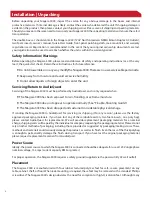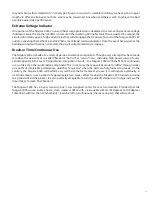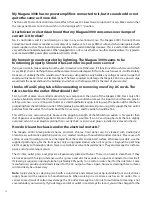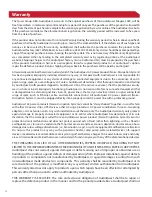
4
Niagara 3000 Features
¡
¡
Transient Power Correction: Provides over 55 amps peak instantaneous current reservoir with
reduced line impedance for current-starved power amplifiers, whether they incorporate linear or
switching power supplies.
¡
¡
Ground Noise-Dissipation System: AudioQuest’s patented technology vastly reduces ground-
borne noise without compromising safety or creating low-level ground loops.
¡
¡
Level-X Linear Noise-Dissipation Technology: Ensures the most consistent and widest
bandwidth noise dissipation possible, without the inconsistent results that typify minimalist,
multi-node resonant peaking found in many AC power conditioners.
¡
¡
NRG Series AC Power Inlets and Outlets: These inlets and outlets feature both high purity red
copper and beryllium copper for superior conductivity, grip, and strength. These are then direct-
plated with a thick layer of silver via a “hanging-silver” process, to ensure the lowest impedance at
radio frequencies, enabling superior noise dissipation.
Introduction
The science of AC power is not simple; it demands focus, and the devil is in the details. In fact, the mammoth
increase in airborne and AC-line-transmitted radio signals, combined with overtaxed utility lines and the ever-
increasing demands from high-definition audio/video components, has rendered our utilities’ AC power an
antiquated technology.
Where Alternating Current (AC) is concerned, we’re relying on a century-old technology created for incandescent
lights and electric motors—technology that was certainly never meant to power the sophisticated analog and
digital circuits used in premium audio/video systems. To properly accommodate the promise of today’s ever-
increasing bandwidth and dynamic range, we must achieve extraordinarily low noise across a wide range of
frequencies.
Further, today’s power amplifiers are being taxed for instantaneous peak-current demand, even when they’re
driven at modest volumes. Although we have seen a substantial increase in both dynamics and bass content
from our audio software, the loudspeakers we employ to reproduce them are no more efficient than they were
two to four decades ago. This places great demands on an amplifier’s power supply, as well as the source AC
power supplying it.
Our systems’ sensitive components need better alternating current—a fact that has resulted in a host of AC power
conditioning, isolation transformers, regeneration amplifiers, and battery back-up system topologies. Through
differential sample tests and spectrum analysis, it can be proven that up to a third of a high-resolution (low-level)
audio signal can be lost, masked, or highly distorted by the vast levels of noise riding along the AC power lines
that feed our components. This noise couples into the signal circuitry as current noise and through AC ground,
permanently distorting and/or masking the source signal.
All sincere attempts to solve this problem must be applauded since once the audio/video signal is gone, it’s gone
forever…
For AudioQuest, honoring the source is never a matter of simply using premium “audiophile-grade parts” or relying
on a proprietary technology—common approaches used within the audiophile market. For years, we have all
been witness to the same, seemingly endless audiophile debates: Valves versus transistors. Analog versus digital.
Can cables really make a difference? The debates go on and on. While we, too, can brag about our many unique
technologies, we realize that true audio/video optimization is never a matter of any one secret or exotic circuit. When
it comes to noise dissipation for AC power, many approaches can yield meaningful results. However, they may also
impart ringing, current compression, and non-linear distortions that are worse than the disease.
Summary of Contents for Niagara 3000
Page 1: ...Owner s Manual NIAGARA 3000 Low Z Power Noise Dissipation System...
Page 18: ...18...
Page 19: ...19...

